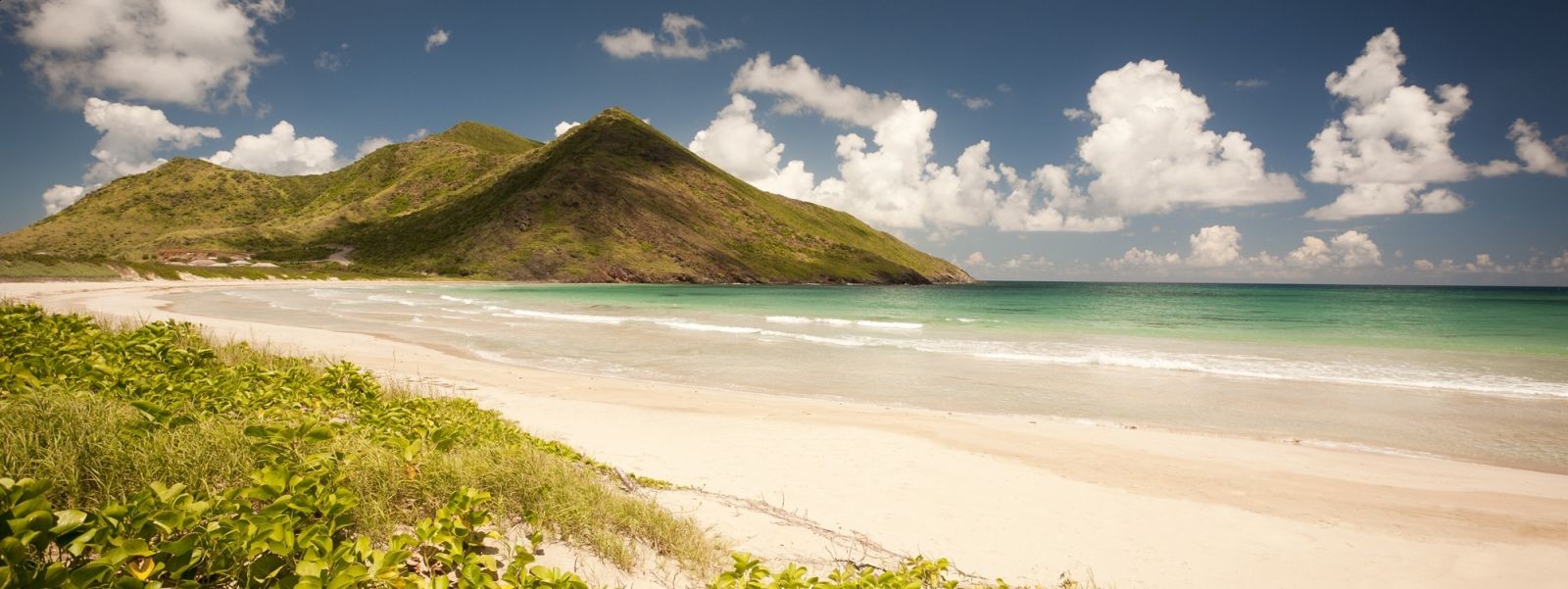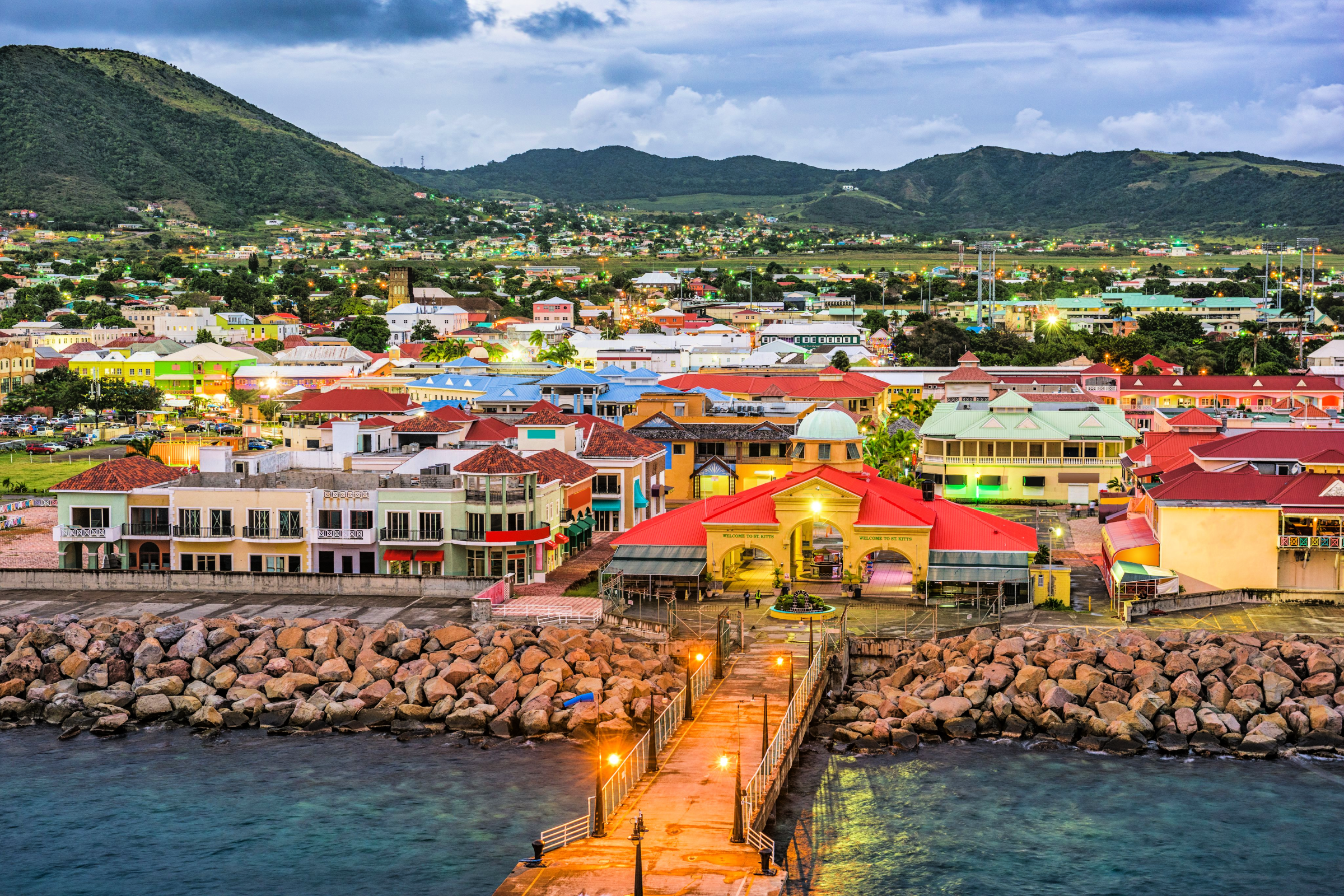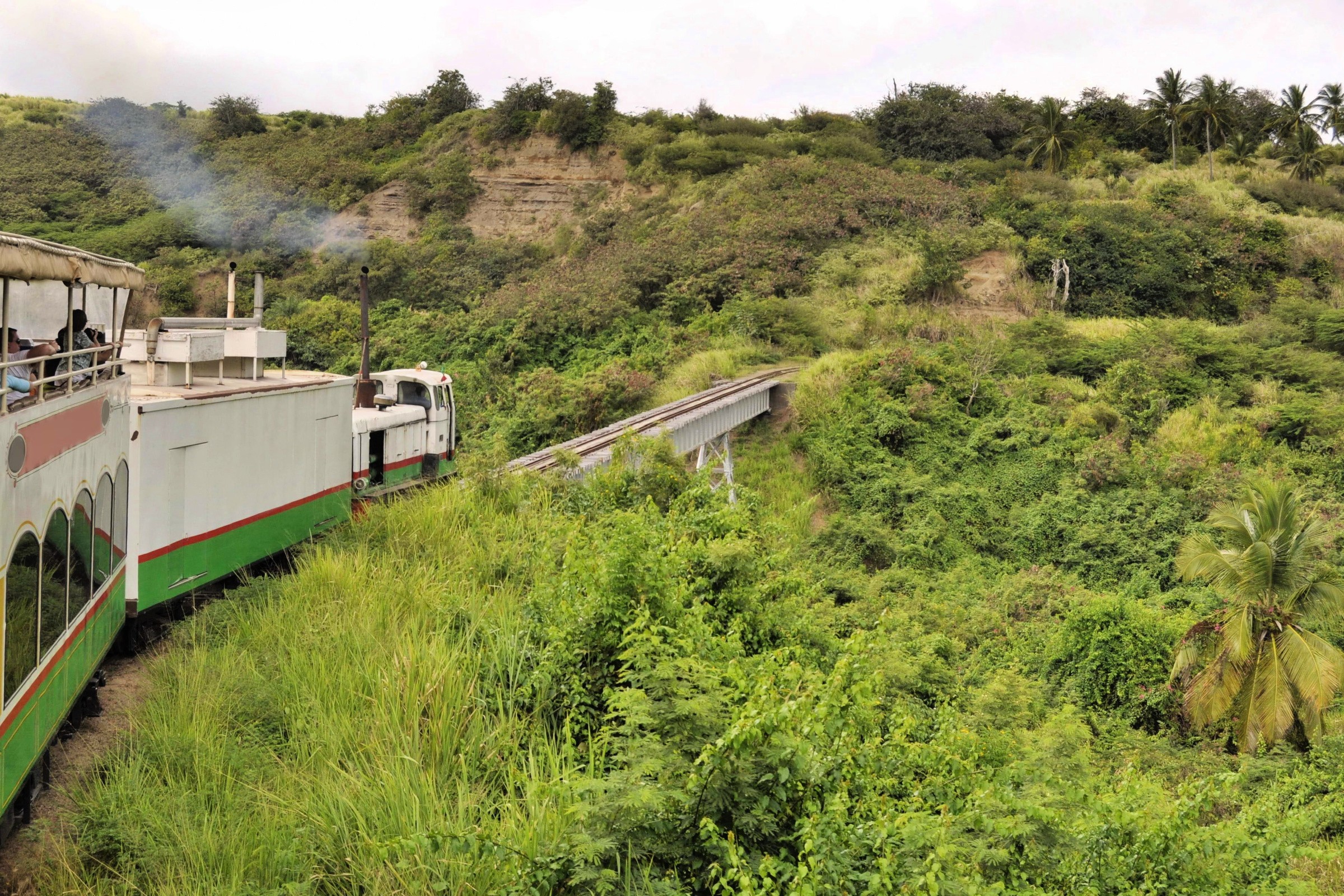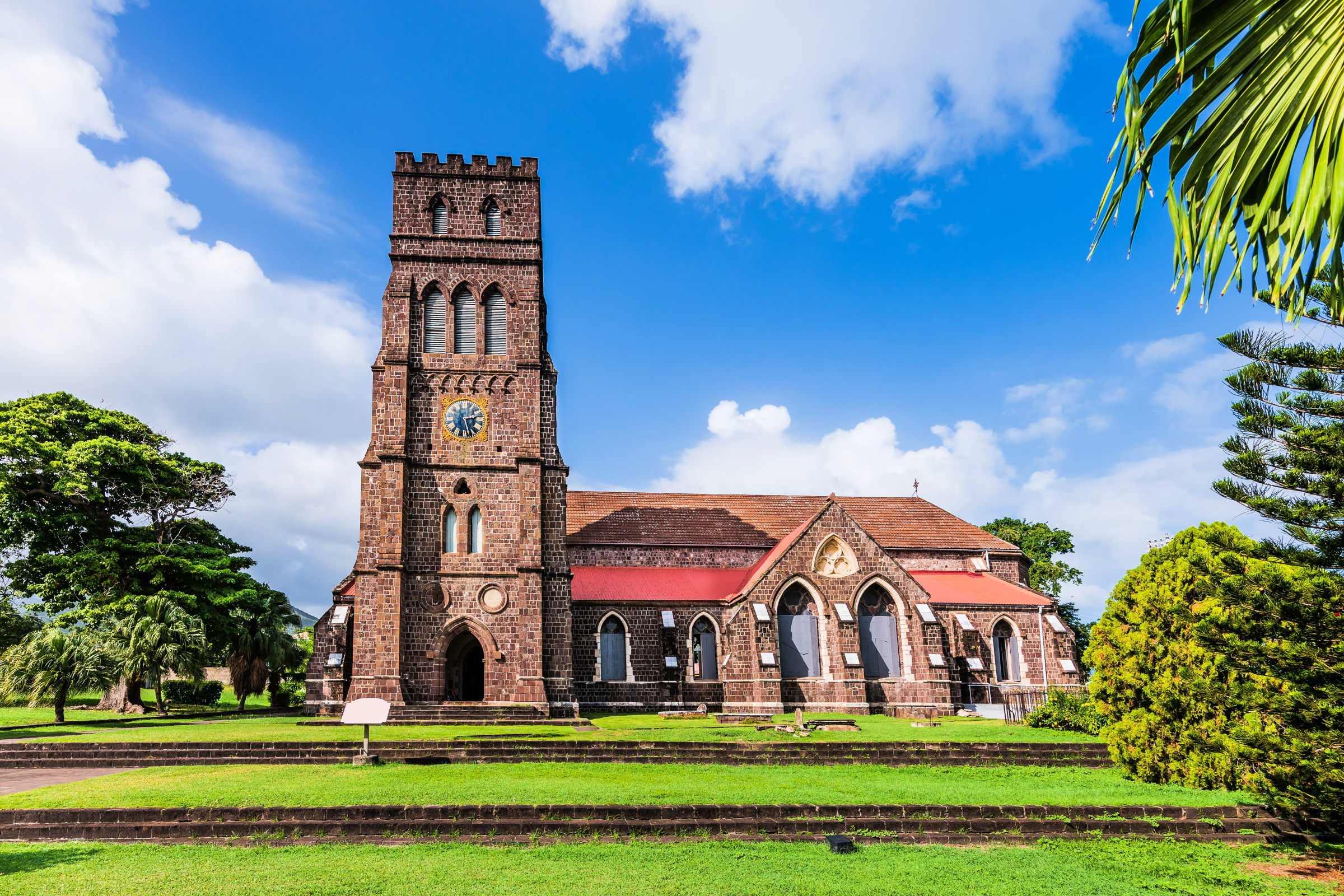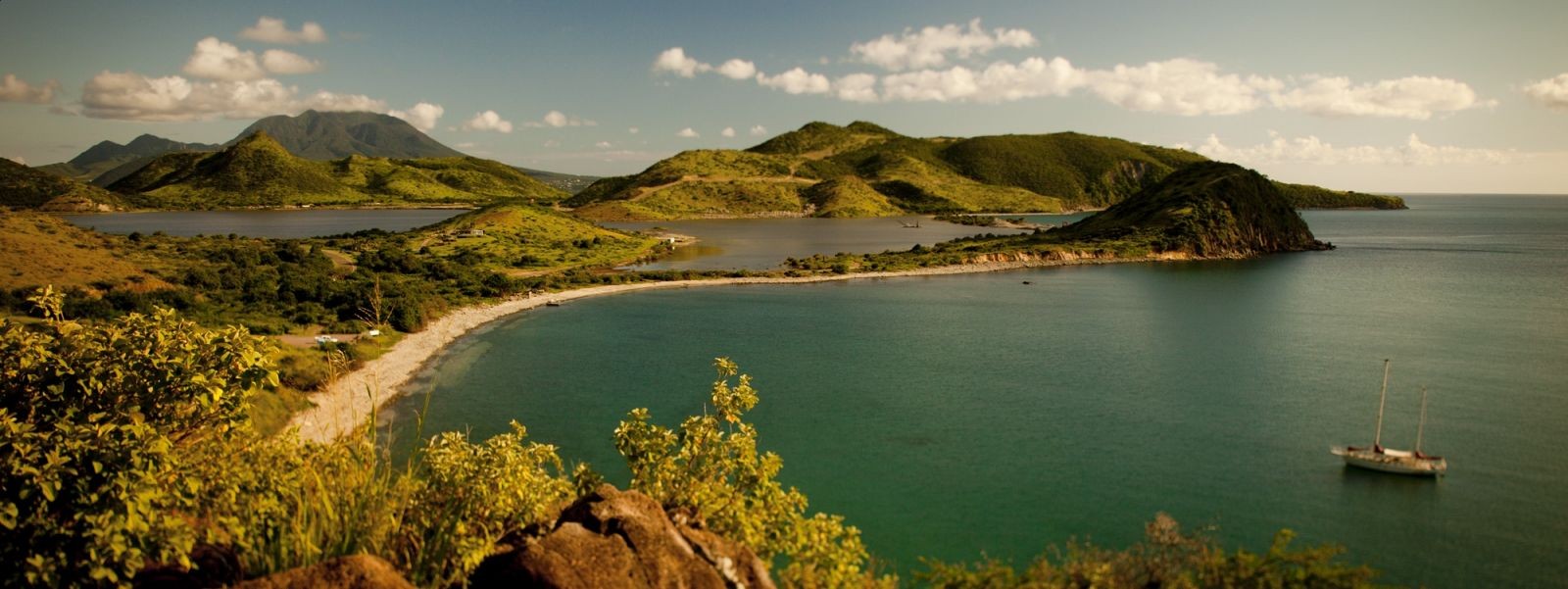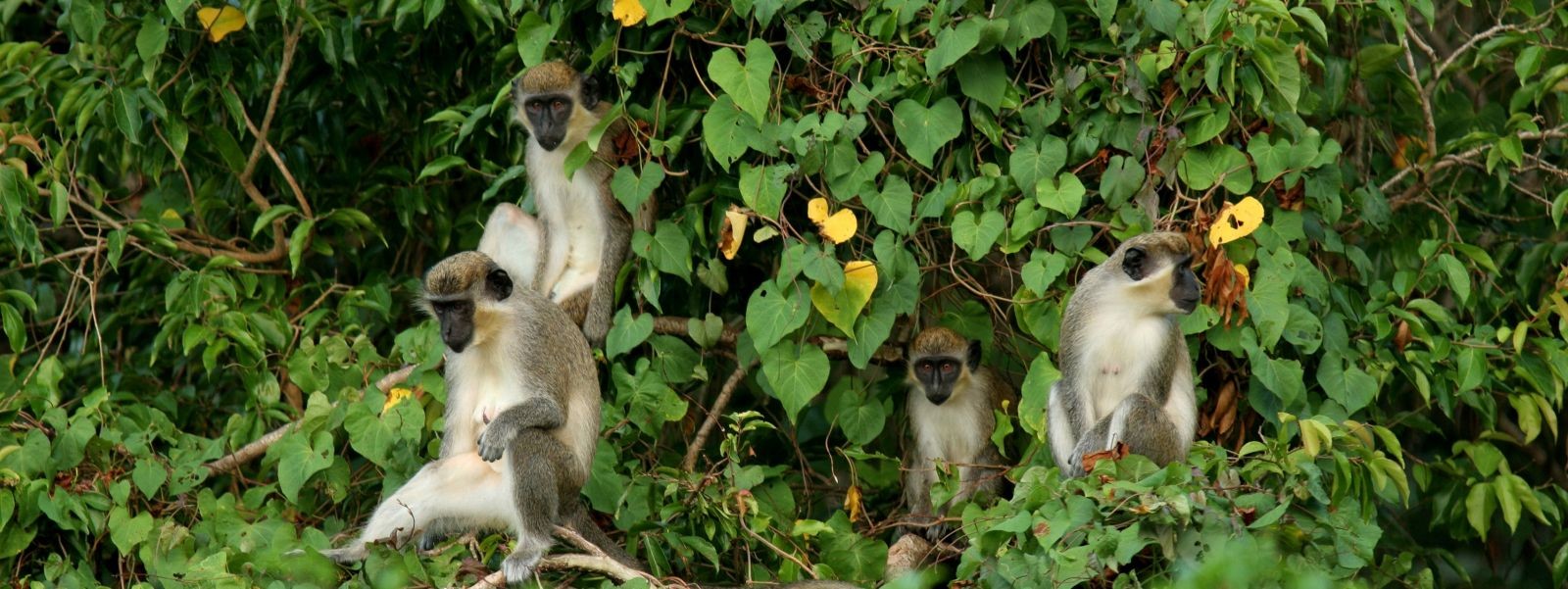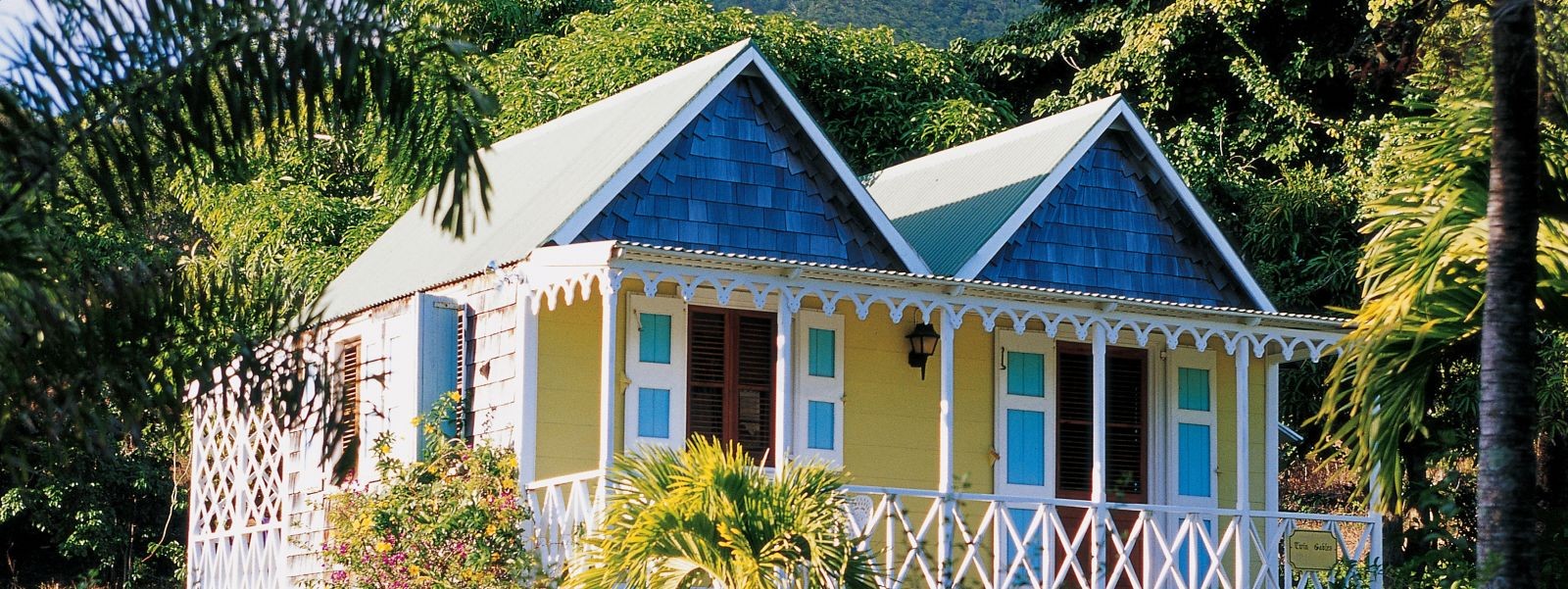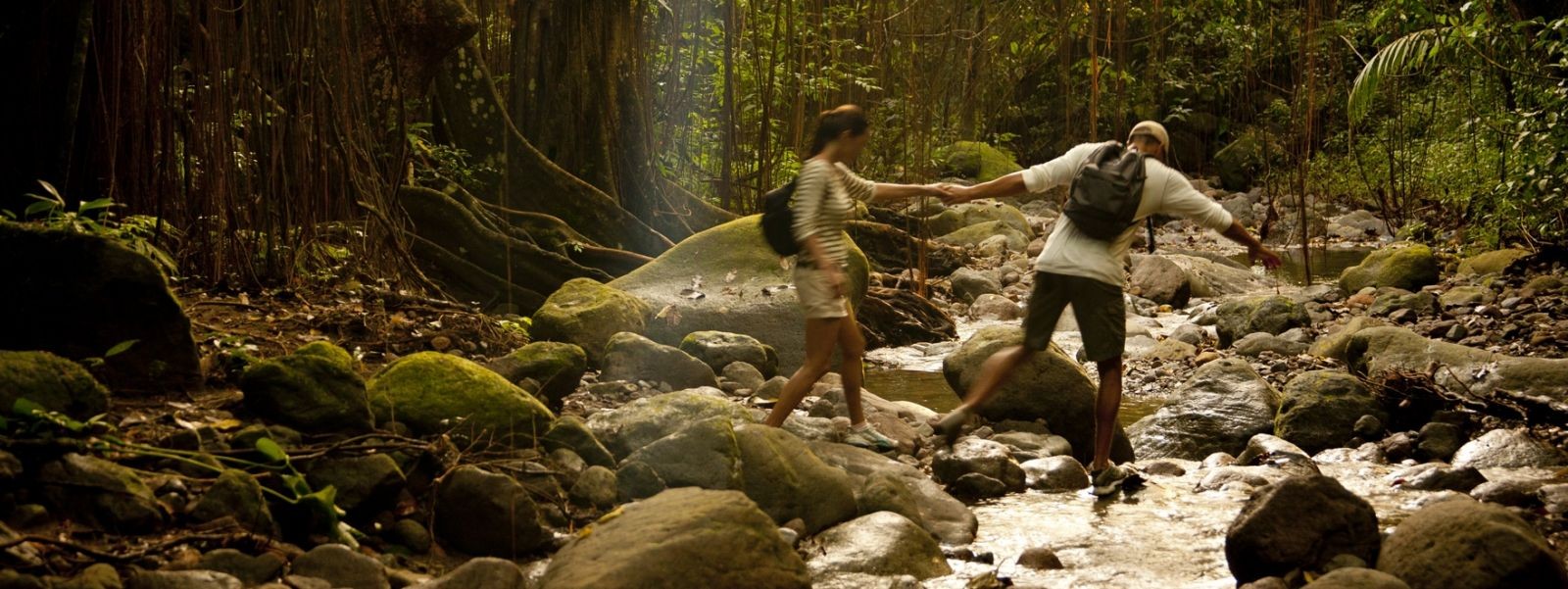Geography
The Federation of St. Kitts and Nevis is a country belonging in the inner arc of the Antilles island chain. Once part of the British Leeward Islands Colony, it got its independence in 1983, forming one of the newest nations in the Western hemisphere. However, both islands have retained strong ties with the other nations of the Commonwealth, while also having the British monarch as their sovereign.
Separated by the Narrows, a 3-kilometres-wide (2 miles) channel, both islands are both volcanic, with the peaks of Mount Liamuiga on Saint Kitts being the highest in the Caribbean (1,156 metres or 3,792 feet). As for Nevis, it can easily be regarded as one massive volcano with the highest point being the central Nevis Peak at 985 metres or 3,232 feet. Finally, both islands are wetter than their eastern siblings, such as Antigua.
Interesting Facts about Saint Kitts & Nevis
- The volcanic vantage points at Saint Kitts provide lines of sight to neighbouring Saba, Saint Eustathius, and Nevis.
- Saint Kitts and Nevis are the oldest colonised territories in the Caribbean and are both volcanic islands with lush tropical vegetation and dramatic central mountains.
- The islands have both black volcanic shores and white, powdery beaches, which you can view by heading to the relevant coastline.
- The most popular phrase the locals use quite often is “Lumin”, which means having a good time, hanging out, or chilling on island time.
- The national bird of the island state is the brown pelican.
- Hamilton, a beloved Broadway musical, is based on the life of Alexander Hamilton, US founding father, who was born in Nevis, in 1755. Its success led to an enormous increase in tourism in Nevis from fans that would swarm the place during the next few years.
- In 1998, there was an attempt to separate Saint Kitts from Nevis and each island to be considered an independent state. The referendum failed to gather a 75% majority so Nevis never seceded from Saint Kitts.
Climate & Weather
The country has a tropical climate, so humid and hot weather year-round with a dry, relatively cool season (January to mid-April) and a rainy, humid, and hot season (mid-June to mid-November). The weather is also affected by the northeast trade winds that blow steadily during the dry season and become more irregular during the west season, which intensifies the sense of humidity in the region.
There are two transitional periods, though, affecting the temperature and rainfall, from mid-April through mid-June and from mid-November through early January. During the first transitional period, the temperature and rainfall frequency increase, while the second has lower temperatures but better weather.
As for the hurricane season, it starts in June and ends in November, with August and September being the months with the highest chances of hurricanes. Regarding the annual average rainfall in St. Kitts & Nevis, it is around 1163 millimetres (45.8 inches), which is lower than the equivalent annual rainfall in Bermuda (1407 mm or 55.4 in) and a little bit over Boston’s yearly average (1059 mm or 41.7 in).
Finally, the average yearly temperatures are around 27oC (80.6oF), with the period from June through October being the hottest, and January and February being the coldest months, with temperatures averaging around 28oC (82oF) and 25.5oC (77oF), respectively.
Things you Probably Didn't Know About the Names of (and on) Saint Kitts and Nevis
- The sister islands were once referred to as the “Gibraltar of the West Indies”. This is probably due to the similarities between the fortifications of the Citadel of Brimstone Hill (a strategic outpost when both the English and French were fighting over control of the Caribbean region) with the British Overseas Territory in the Iberian Peninsula.
- When Columbus discovered Saint Kitts, he named it St. Christopher (after his patron saint), which was later shortened to Saint Kitts.
- As for Nevis’ name, when Christopher Columbus discovered it, he named it Nevis from the Spanish word “Nieves”, which means “snow”, because the island looked like a snow-capped mountain (he mistook the clouds at the summit of the mountain as snow).
- Basseterre, the capital of the country, is a sheltered anchorage that sits on the downwind side of the island within a valley. For that reason, its name is translated as “Low Land” from the French word “basseterre.”
Famous Landmarks
The 1625-founded Wingfield Estate is a leading local landmark that operated as a sugar plantation until the 1920s and speaks of the islands’ past and the sugar industry that once thrived here. In a way, it is also a site reminding the African slaves’ hardships and their attempts to regain their freedom. Today, it is a scenic ruin with some of its original structures and buildings partly restored.
Other popular tourist attractions at Saint Kitts & Nevis are the Nevis Heritage Trail, Romney Manor, Sand Bank Bay, Pinney’s Beach, Timothy Hill, Banana Bay, Sandy Point National Marine Park, Mount Liamuiga, Brimstone Fortress, Nevis Botanical Garden, and many more.
Local Gastronomy
The Saint Kitts and Nevis national dish is goat water, a stew made from goat meat and an assortment of ingredients, including vegetables and seasonings. Also, popular dishes include conch fritters, seafood, roti, black pudding, pelau, guava cheese, and others, all served at restaurants across both islands, as well as street vendors.
As for the drinks the locals most love to spoil their throat with, these include locally brewed beer, local rum, and Killer Bee – a rum-based cocktail made with honey, passion fruit puree, pepper, orange juice, and other delicious ingredients.
Other Compelling Facts about Saint Kitts and Nevis
- The people on Nevis are called Nevisians, while their Saint Kitts counterparts are called Kittitians.
- The two-island Caribbean country is the smallest country, in both population and area, in the Americas.
- The Saint Kitts settlement began in 1623 by the English, who made Saint Kitts the first English colony in the Caribbean region. Before they took full control of the island, though, they had to fight with the French over it several times.
Geography
The Federation of St. Kitts and Nevis is a country belonging in the inner arc of the Antilles island chain. Once part of the British Leeward Islands Colony, it got its independence in 1983, forming one of the newest nations in the Western hemisphere. However, both islands have retained strong ties with the other nations of the Commonwealth, while also having the British monarch as their sovereign.
Separated by the Narrows, a 3-kilometres-wide (2 miles) channel, both islands are both volcanic, with the peaks of Mount Liamuiga on Saint Kitts being the highest in the Caribbean (1,156 metres or 3,792 feet). As for Nevis, it can easily be regarded as one massive volcano with the highest point being the central Nevis Peak at 985 metres or 3,232 feet. Finally, both islands are wetter than their eastern siblings, such as Antigua.
Interesting Facts about Saint Kitts & Nevis
- The volcanic vantage points at Saint Kitts provide lines of sight to neighbouring Saba, Saint Eustathius, and Nevis.
- Saint Kitts and Nevis are the oldest colonised territories in the Caribbean and are both volcanic islands with lush tropical vegetation and dramatic central mountains.
- The islands have both black volcanic shores and white, powdery beaches, which you can view by heading to the relevant coastline.
- The most popular phrase the locals use quite often is “Lumin”, which means having a good time, hanging out, or chilling on island time.
- The national bird of the island state is the brown pelican.
- Hamilton, a beloved Broadway musical, is based on the life of Alexander Hamilton, US founding father, who was born in Nevis, in 1755. Its success led to an enormous increase in tourism in Nevis from fans that would swarm the place during the next few years.
- In 1998, there was an attempt to separate Saint Kitts from Nevis and each island to be considered an independent state. The referendum failed to gather a 75% majority so Nevis never seceded from Saint Kitts.
Climate & Weather
The country has a tropical climate, so humid and hot weather year-round with a dry, relatively cool season (January to mid-April) and a rainy, humid, and hot season (mid-June to mid-November). The weather is also affected by the northeast trade winds that blow steadily during the dry season and become more irregular during the west season, which intensifies the sense of humidity in the region.
There are two transitional periods, though, affecting the temperature and rainfall, from mid-April through mid-June and from mid-November through early January. During the first transitional period, the temperature and rainfall frequency increase, while the second has lower temperatures but better weather.
As for the hurricane season, it starts in June and ends in November, with August and September being the months with the highest chances of hurricanes. Regarding the annual average rainfall in St. Kitts & Nevis, it is around 1163 millimetres (45.8 inches), which is lower than the equivalent annual rainfall in Bermuda (1407 mm or 55.4 in) and a little bit over Boston’s yearly average (1059 mm or 41.7 in).
Finally, the average yearly temperatures are around 27oC (80.6oF), with the period from June through October being the hottest, and January and February being the coldest months, with temperatures averaging around 28oC (82oF) and 25.5oC (77oF), respectively.
Things you Probably Didn't Know About the Names of (and on) Saint Kitts and Nevis
- The sister islands were once referred to as the “Gibraltar of the West Indies”. This is probably due to the similarities between the fortifications of the Citadel of Brimstone Hill (a strategic outpost when both the English and French were fighting over control of the Caribbean region) with the British Overseas Territory in the Iberian Peninsula.
- When Columbus discovered Saint Kitts, he named it St. Christopher (after his patron saint), which was later shortened to Saint Kitts.
- As for Nevis’ name, when Christopher Columbus discovered it, he named it Nevis from the Spanish word “Nieves”, which means “snow”, because the island looked like a snow-capped mountain (he mistook the clouds at the summit of the mountain as snow).
- Basseterre, the capital of the country, is a sheltered anchorage that sits on the downwind side of the island within a valley. For that reason, its name is translated as “Low Land” from the French word “basseterre.”
Famous Landmarks
The 1625-founded Wingfield Estate is a leading local landmark that operated as a sugar plantation until the 1920s and speaks of the islands’ past and the sugar industry that once thrived here. In a way, it is also a site reminding the African slaves’ hardships and their attempts to regain their freedom. Today, it is a scenic ruin with some of its original structures and buildings partly restored.
Other popular tourist attractions at Saint Kitts & Nevis are the Nevis Heritage Trail, Romney Manor, Sand Bank Bay, Pinney’s Beach, Timothy Hill, Banana Bay, Sandy Point National Marine Park, Mount Liamuiga, Brimstone Fortress, Nevis Botanical Garden, and many more.
Local Gastronomy
The Saint Kitts and Nevis national dish is goat water, a stew made from goat meat and an assortment of ingredients, including vegetables and seasonings. Also, popular dishes include conch fritters, seafood, roti, black pudding, pelau, guava cheese, and others, all served at restaurants across both islands, as well as street vendors.
As for the drinks the locals most love to spoil their throat with, these include locally brewed beer, local rum, and Killer Bee – a rum-based cocktail made with honey, passion fruit puree, pepper, orange juice, and other delicious ingredients.
Other Compelling Facts about Saint Kitts and Nevis
- The people on Nevis are called Nevisians, while their Saint Kitts counterparts are called Kittitians.
- The two-island Caribbean country is the smallest country, in both population and area, in the Americas.
- The Saint Kitts settlement began in 1623 by the English, who made Saint Kitts the first English colony in the Caribbean region. Before they took full control of the island, though, they had to fight with the French over it several times.




